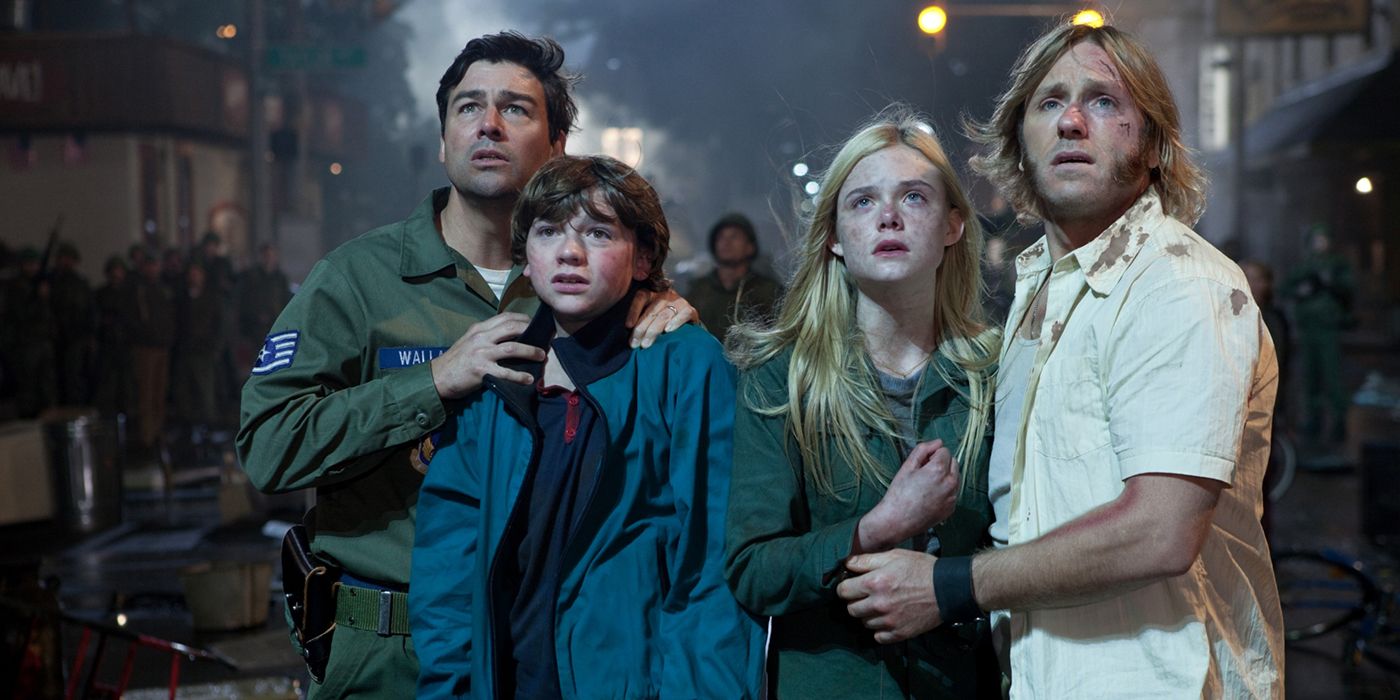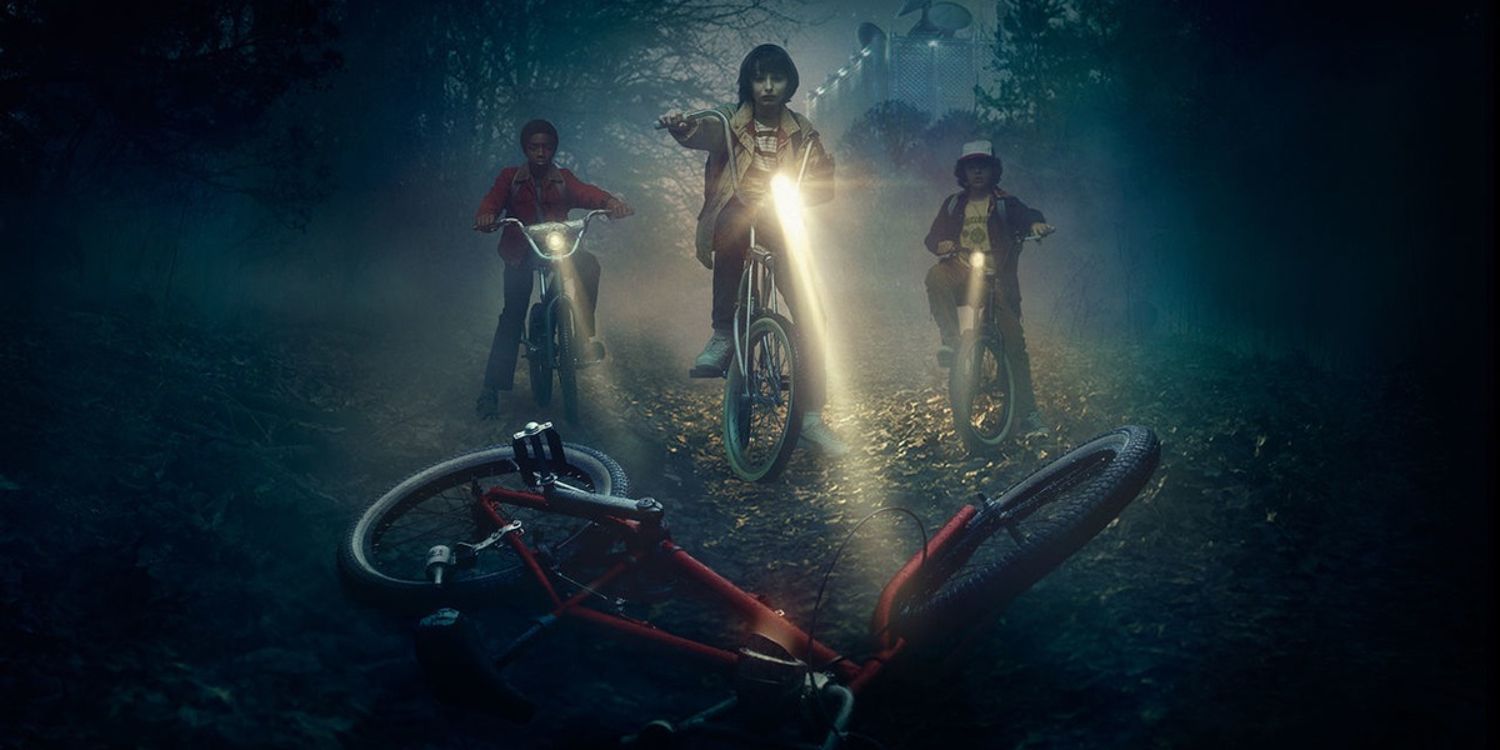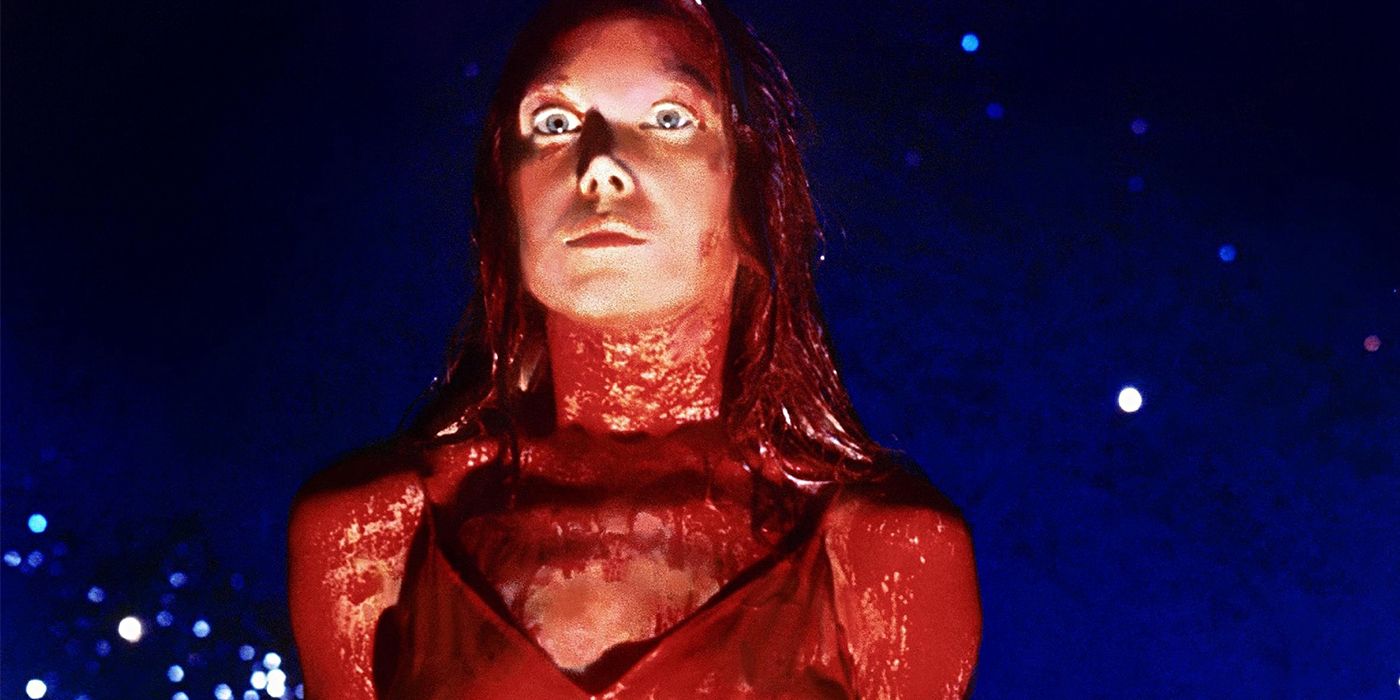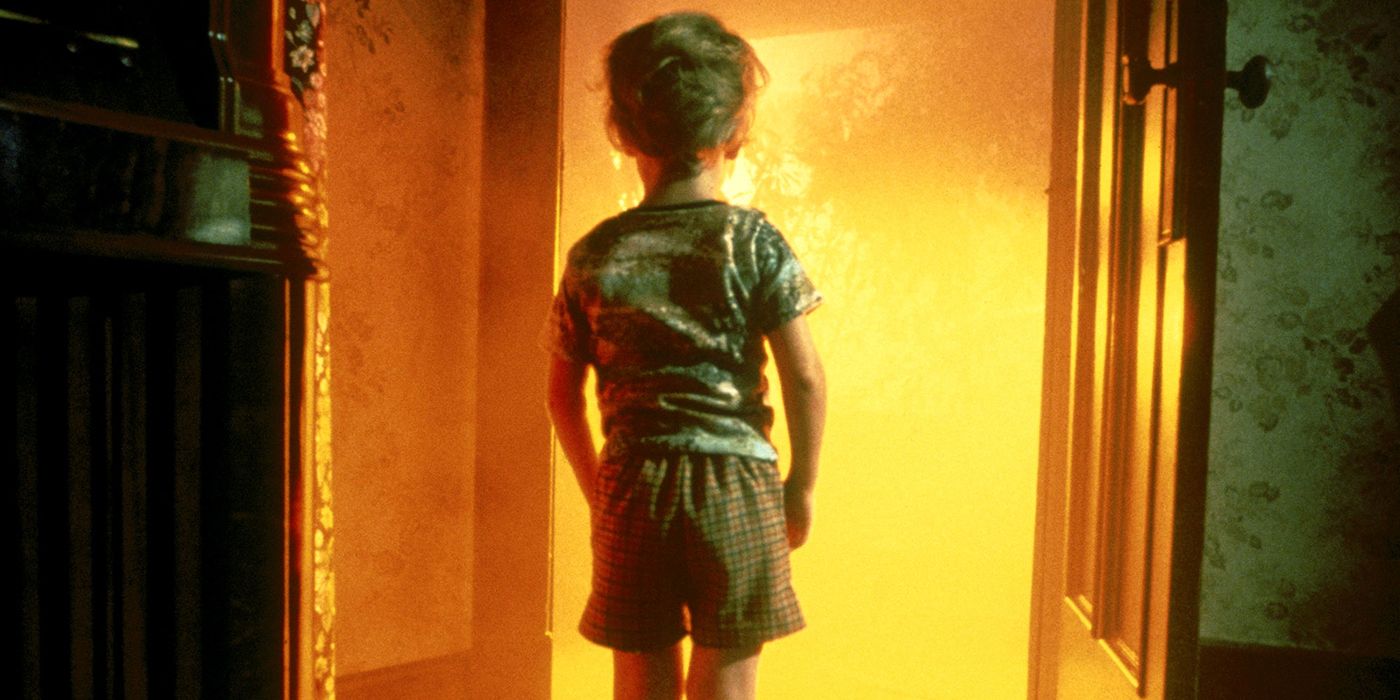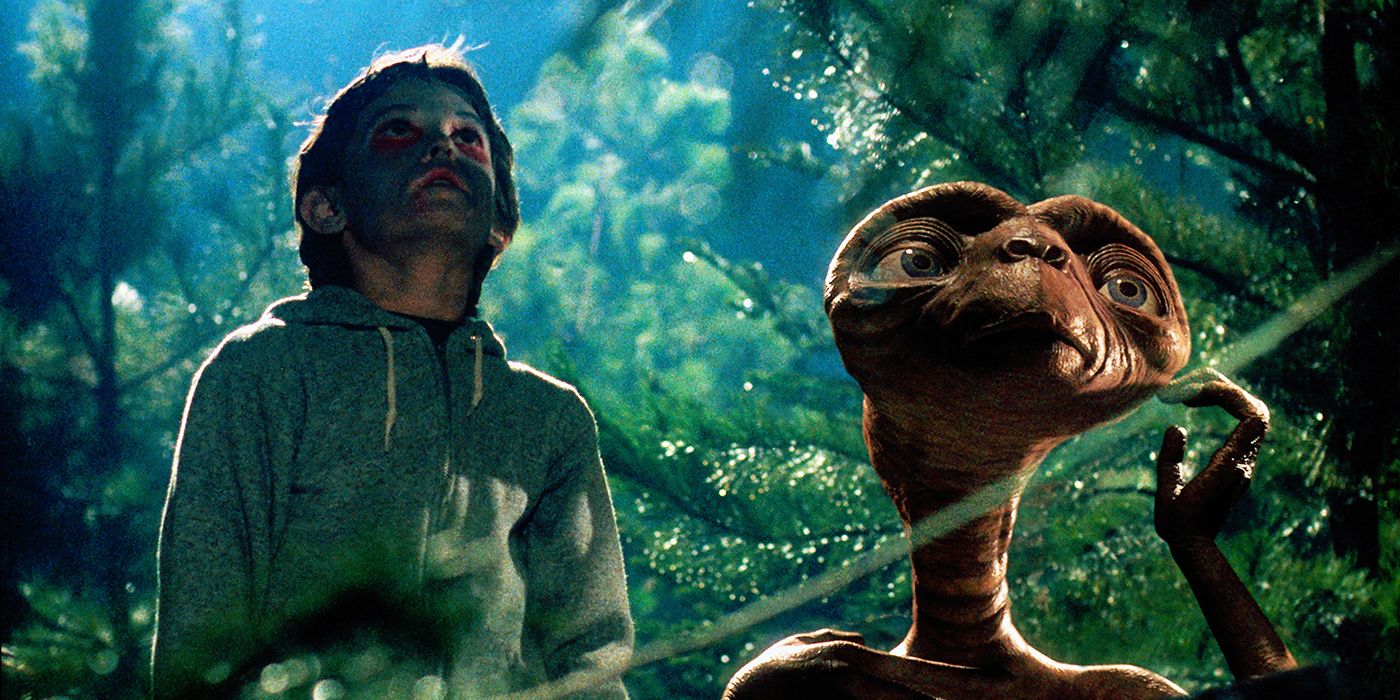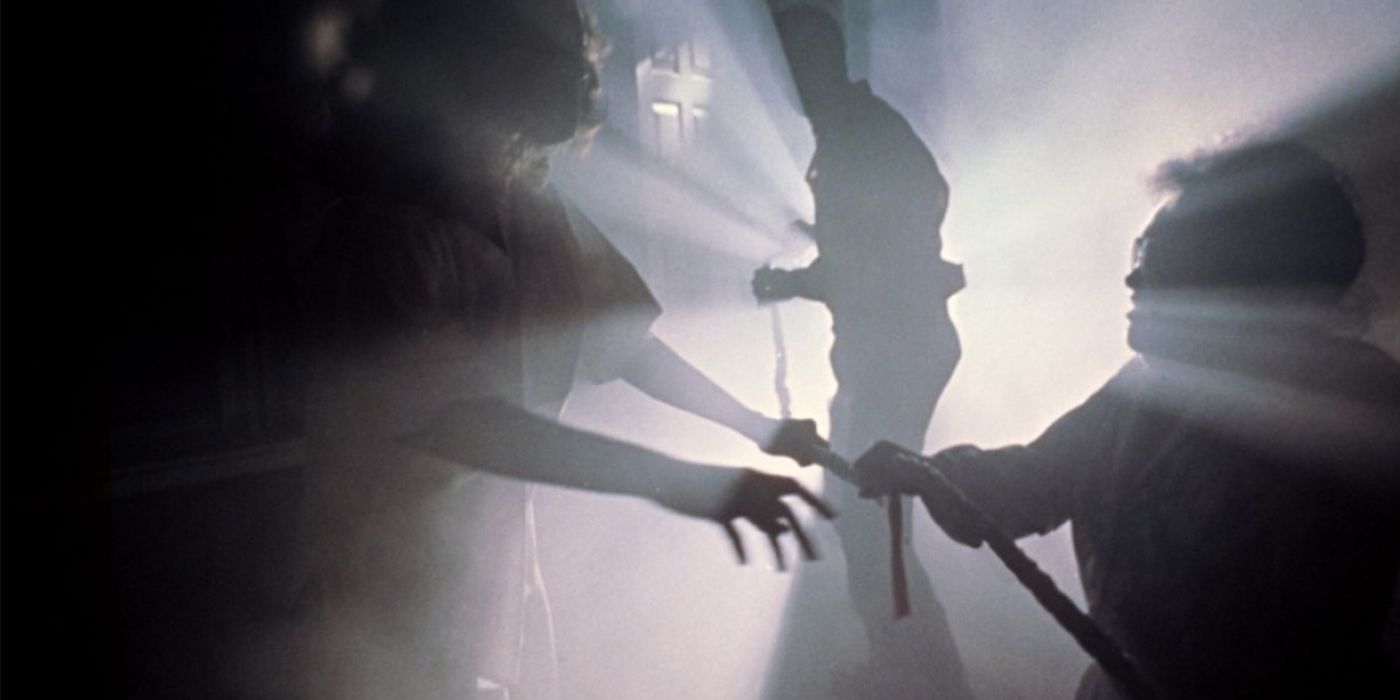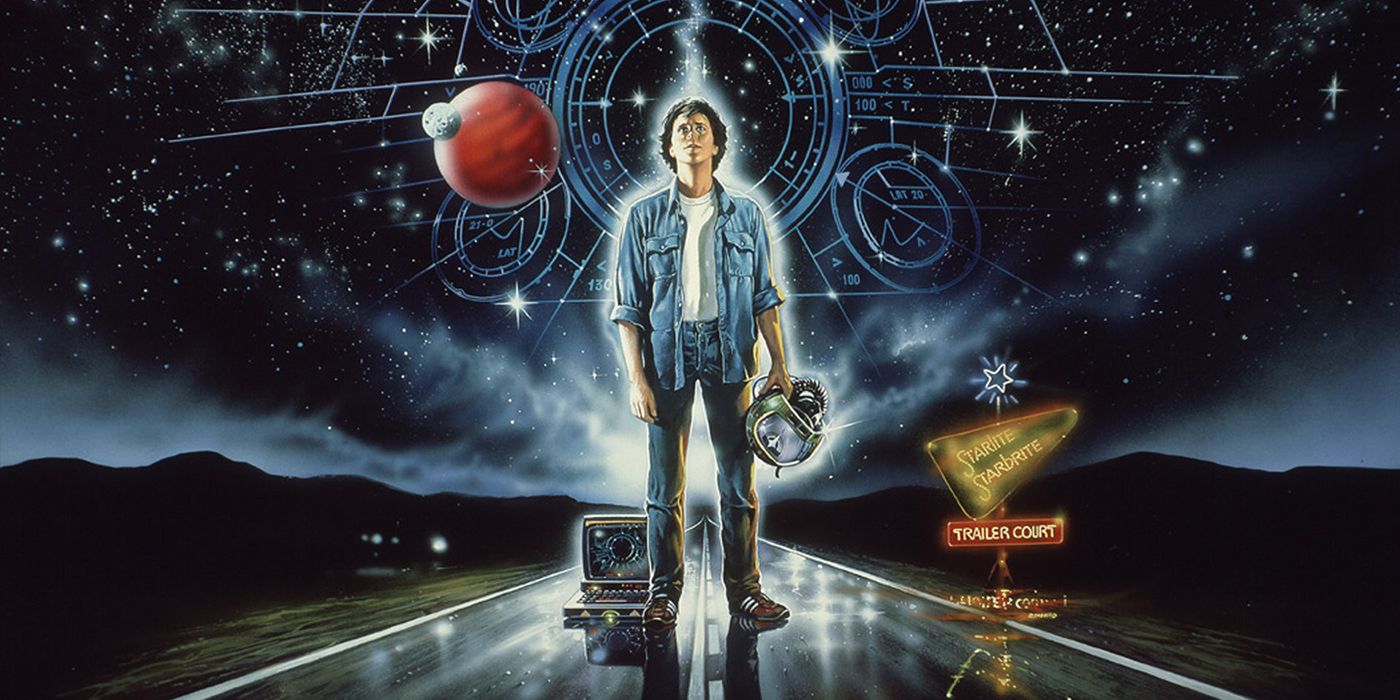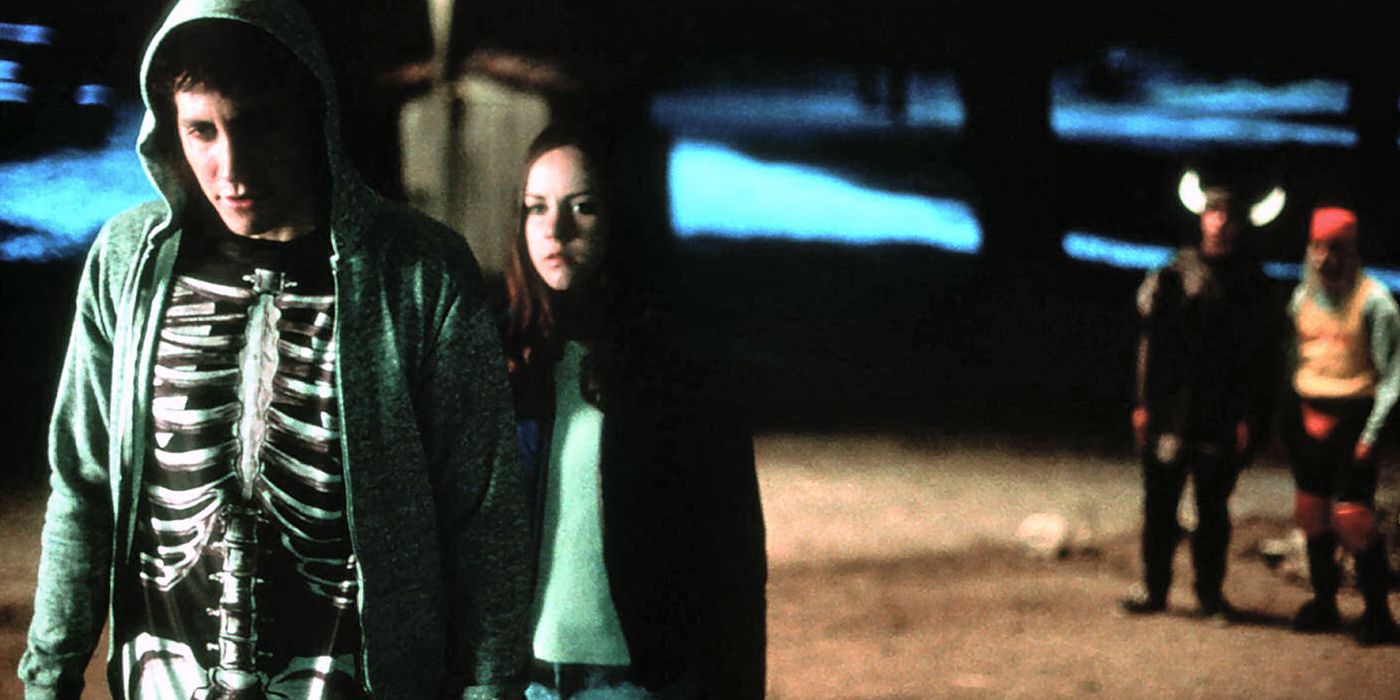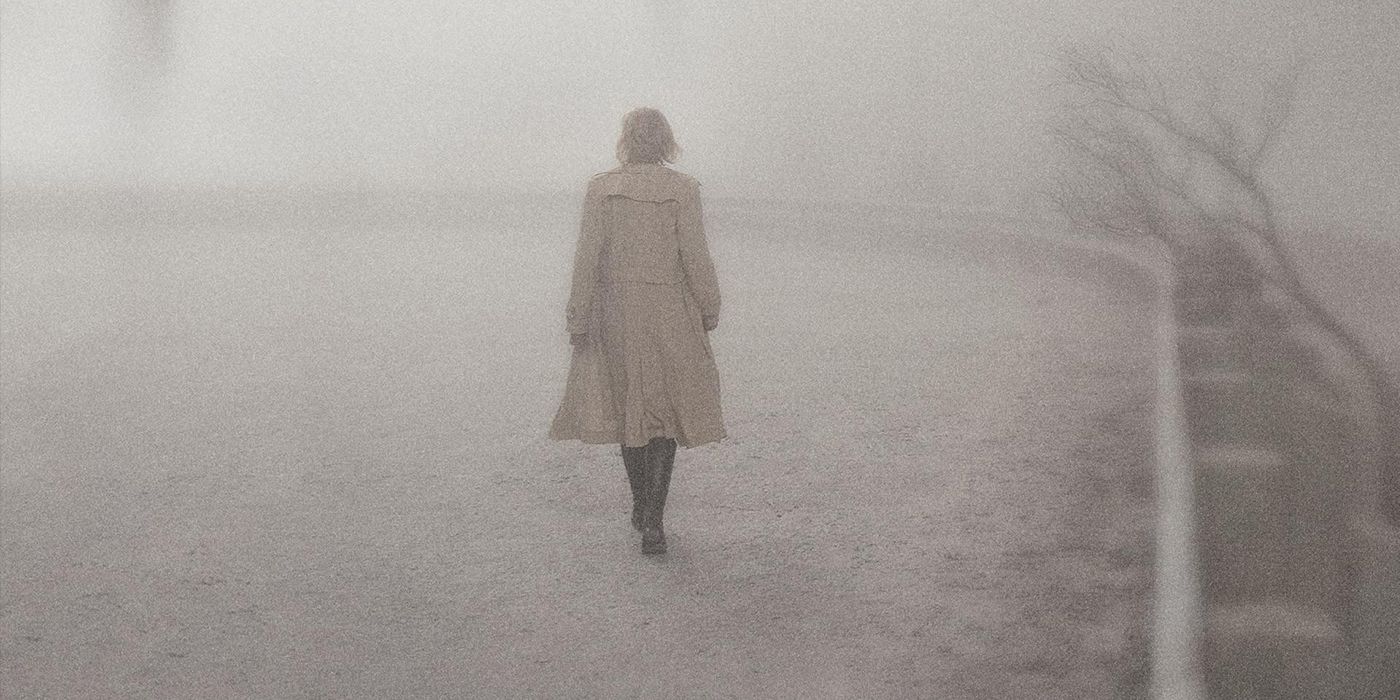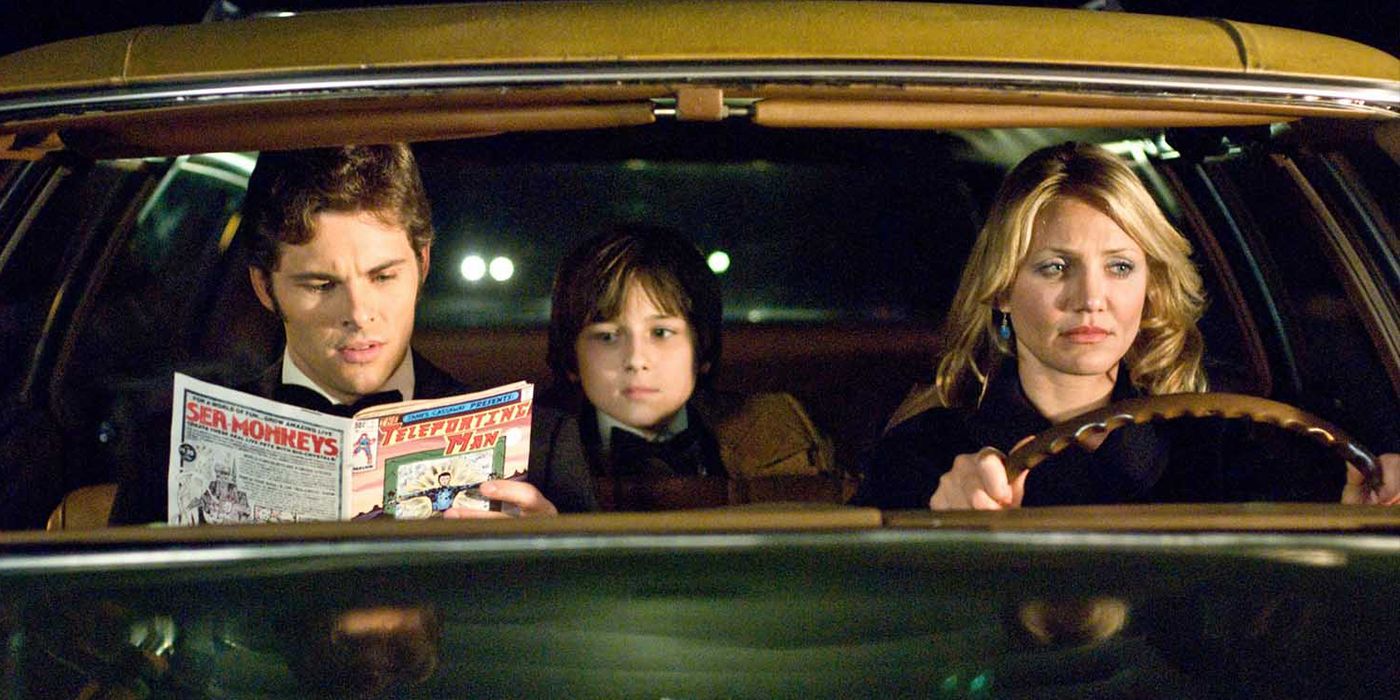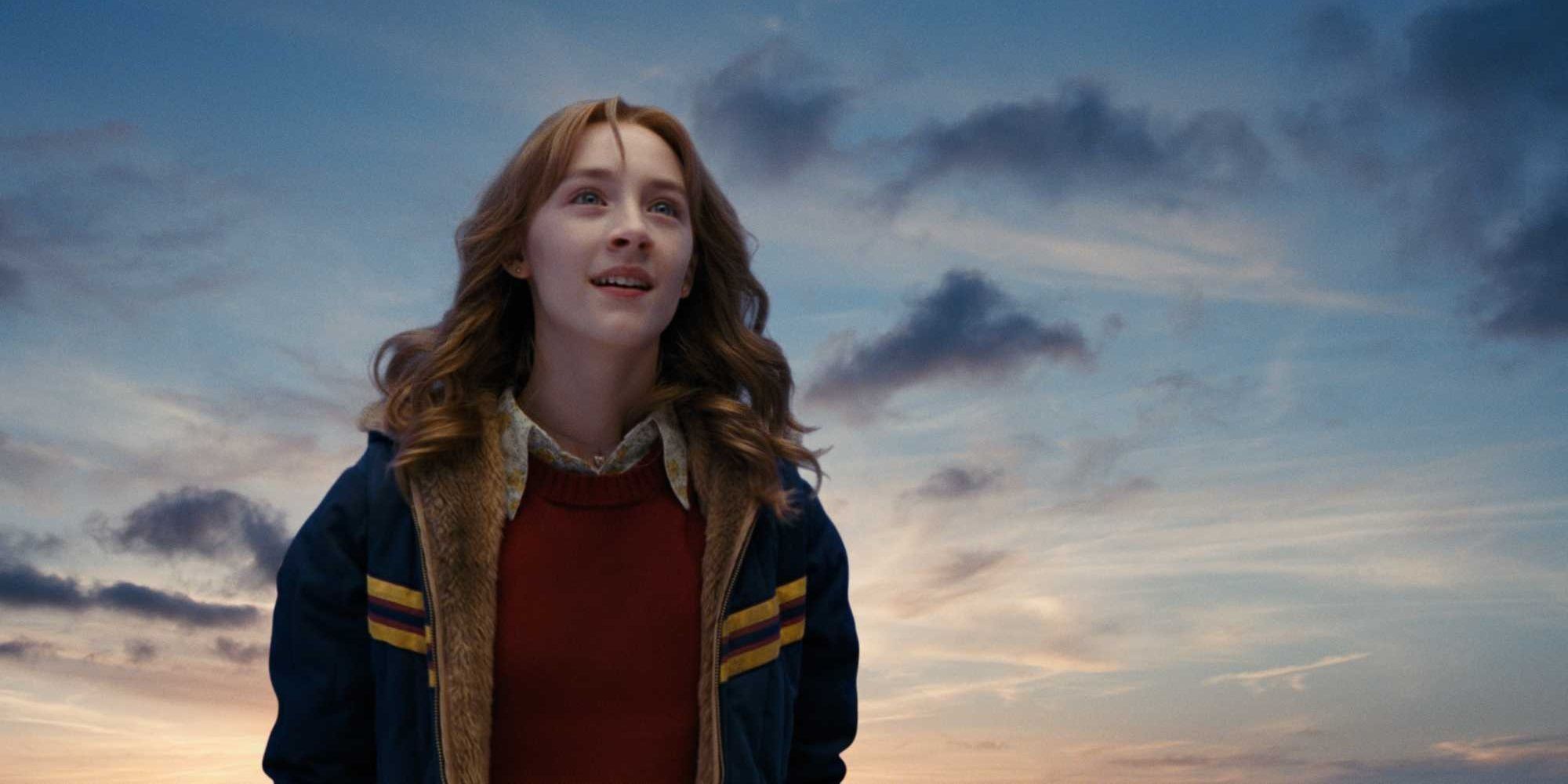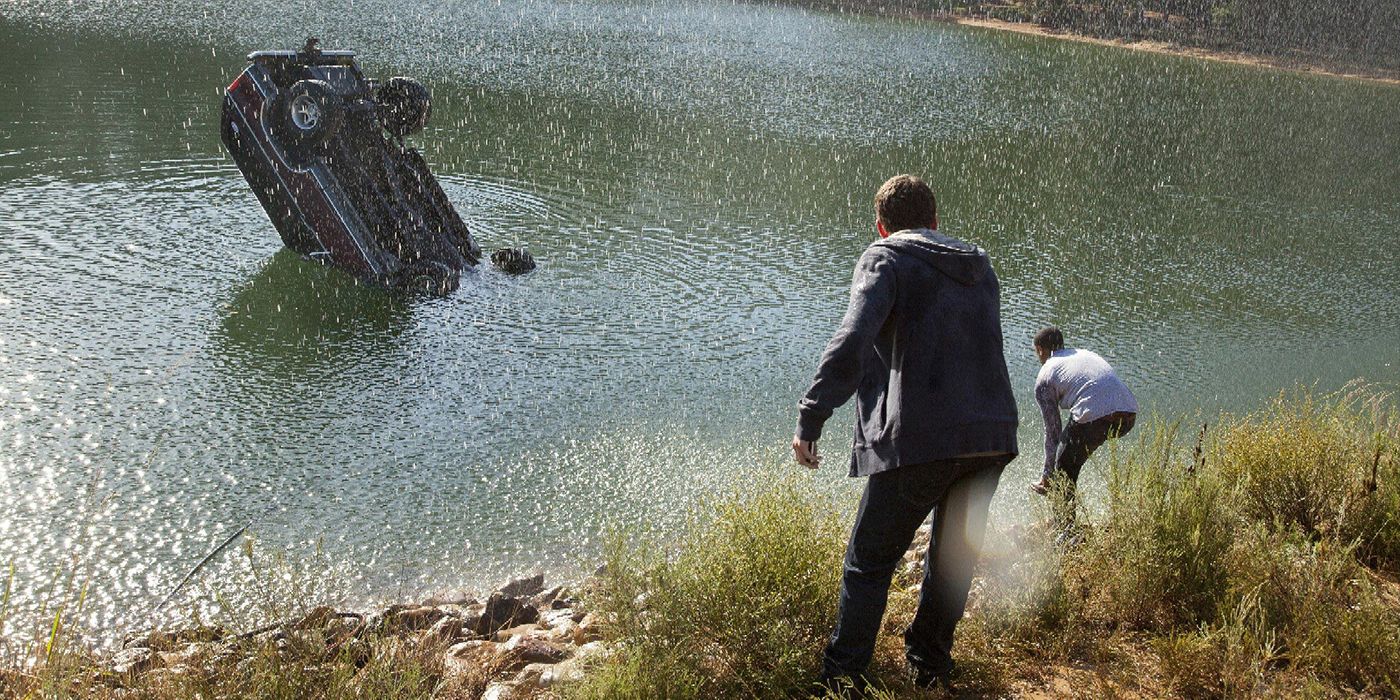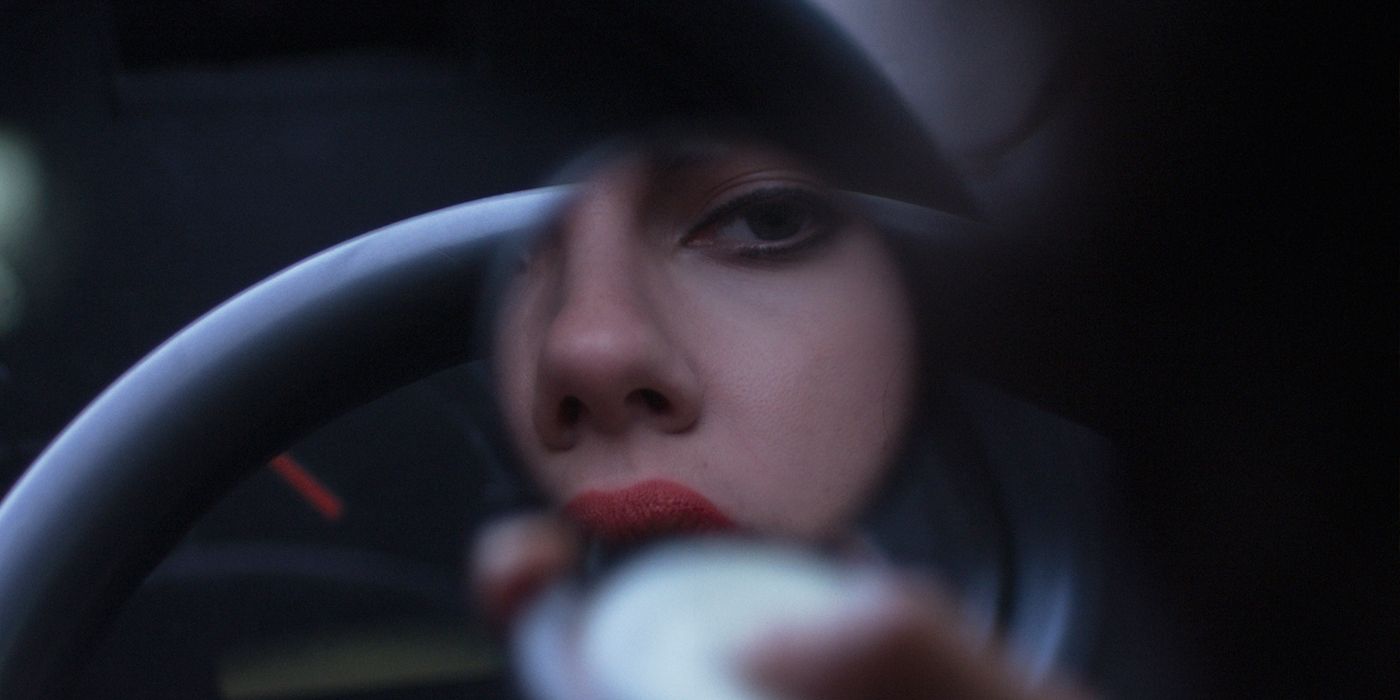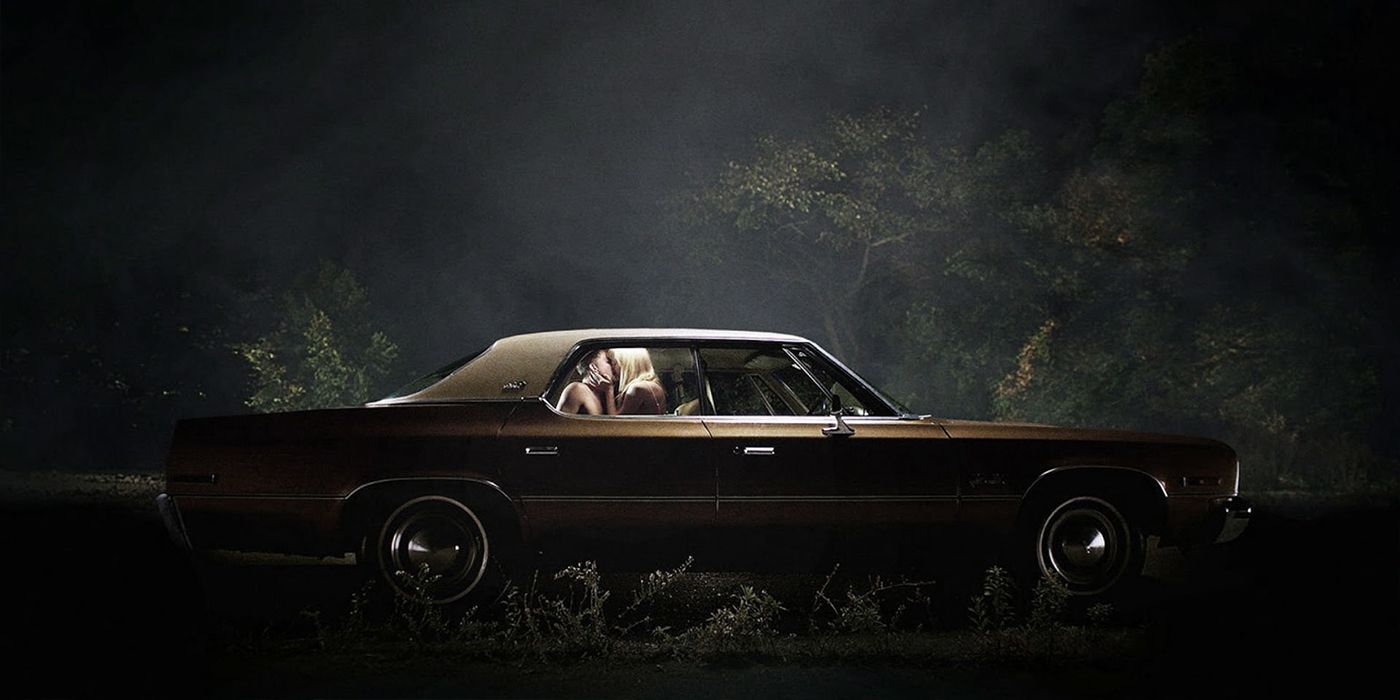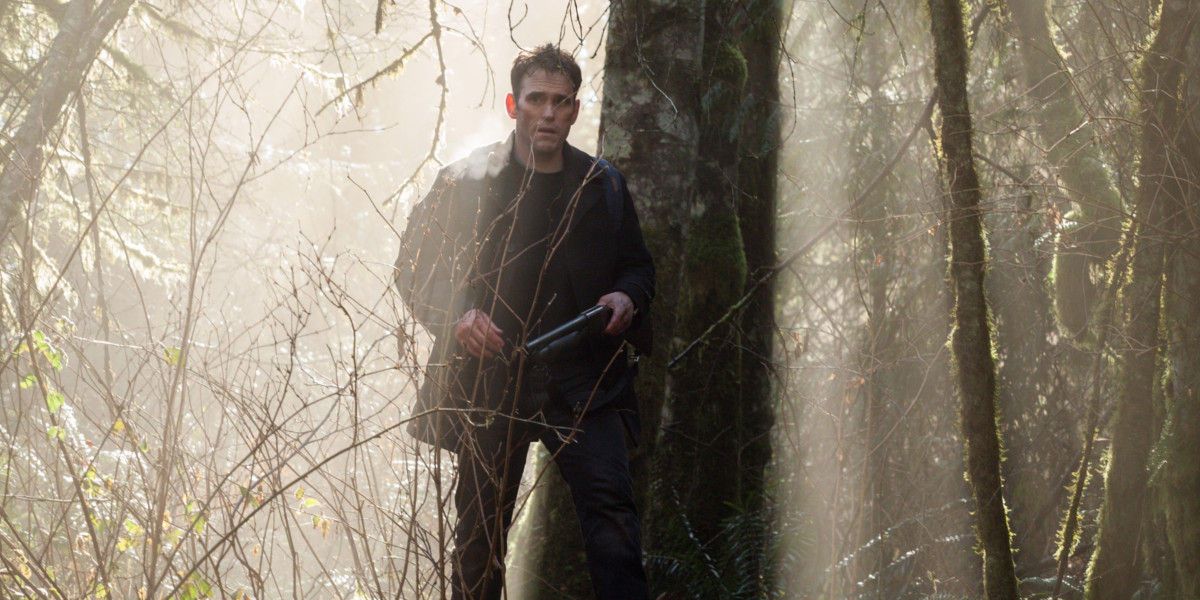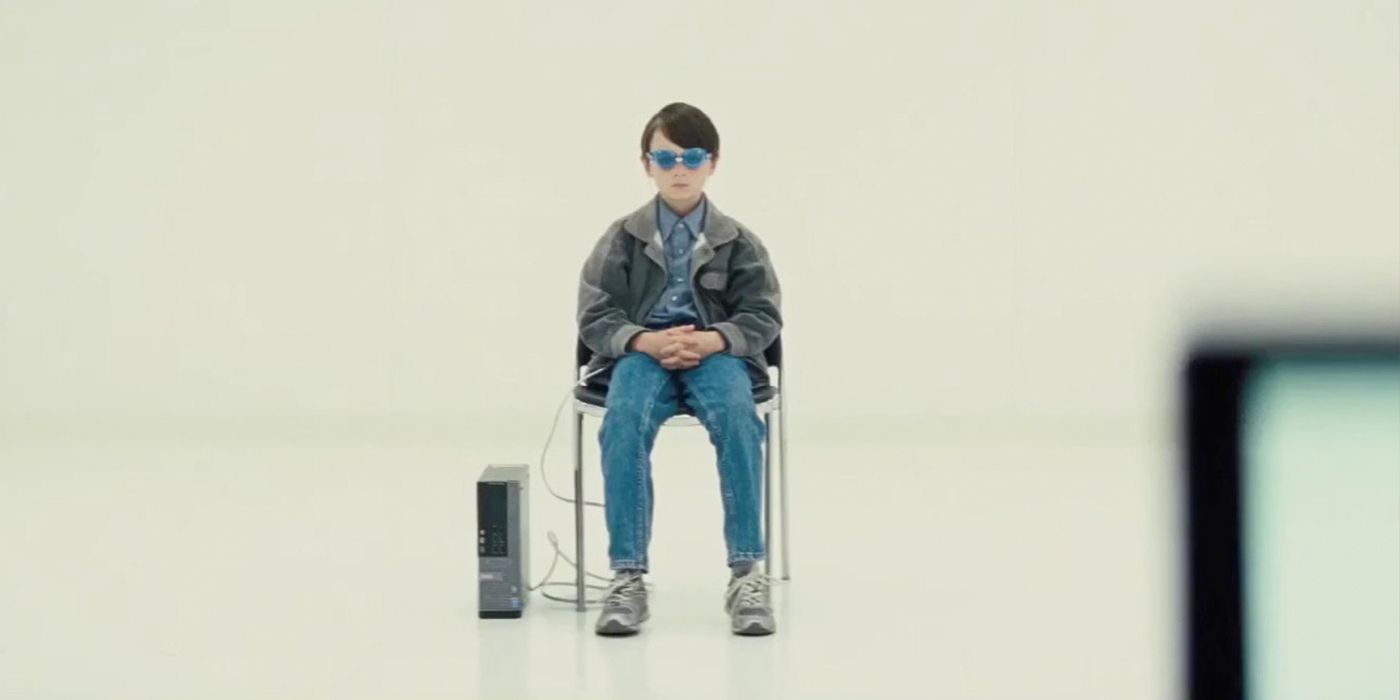Stranger Things started streaming this month on Netflix, to a wave of overwhelming feedback both by critics and viewers, which quickly drove to the announcement of several more seasons. It was particularly cherished by those between the ages of 30-40, as it plays out as the perfect throwback series to the 1980s, a tribute to the wild and often creepy children’s adventures, a love letter to genre buffs’ two favorite Stevens, Spielberg and King. Showrunners Matt and Ross Duffer created a captivating story, equally rooted in sci-fi and horror, with solid, fun, and downright lovable characters you care deeply about, reminding us why all those 1980s flicks are so beloved today. However, Stranger Things is far more than mere nostalgia. It’s a beast of its own.
Thematically, the show appropriately advances the rather long tradition of the suburban fantasy subgenre. After suburbia’s consolidation in the 1950s and 1960s as the ideal version of the American way of life and a distinct indicator of prosperity and order, it was gradually being deconstructed in the 1970s and the following decades, indicating that behind these perfectly planned low-crime communities with the identical houses and organized plantations, lay a different truth; one of escalating anxiety, depression, crime, and abuse.
These suburban fantasies often functioned as allegories for this concealed world and commented on issues of conservatism and confinement, alienation and otherness. The genre burst into the 1970s, filtered through the general sense of dispute of the era, and was established in the 1980s toward more family-friendly, adventurous paths, was eclipsed in the 1990s and started rising again in the 2000s, until its full-on revival in the 2010s.
Here are 15 definitive specimens from the past forty years (in chronological order) that shaped the roots, the characters, the tone, and the aesthetics all so wonderfully present in Stranger Things.
15. Carrie (1976)
Carrie, the real prom queen. In a fortuitous encounter of talent, thriller virtuoso Brian De Palma, horror master Stephen King, and arresting performer Sissy Spacek produced a genre-defining film, haunting the teenage dreams of a turbulent decade. Adapted from the widely banned bestseller, Carrie is a cold revenge tale of a cruelly oppressed girl who decides to put her newfound psychic powers to good use, spreading pain and terror in a seemingly calm community. A trademark piece of the suburban gothic, the film delves into issues of estrangement and bullying in pre-adult life, not hesitating to criticize the suffocating effects of religion.
Self-proclaimed fans of Steven King, the Duffers showcase his pivotal influence throughout their work. Stranger Things’ Eleven is a gifted character that draws heavily from Carrie, but expresses the idiosyncrasy of otherness in a different, more hopeful way, since her actions are mostly driven by love, rather than revenge. However, during the power demonstration scenes, you can clearly identify shards of Spacek’s bone-chilling performance, drafted on the young girl’s sore face.
14. Close Encounters of the Third Kind (1977)
Steven Spielberg is the father of the suburban fantasy. While the genre kicked off in the 1970s with twisted sociological parables such as Carrie and The Stepford Wives, he interpreted it from a completely different perspective, rendering it with hope and wonder-- the two most crucial elements of the Spielbergian mythos-- and creating nothing short of cinematic masterpieces that future generations will reference obsessively.
Forty years after its release, Close Encounters of the Third Kind remains one of the best sci-fi films ever made and among the most optimistic too. The idea of a peaceful alien invasion was undoubtedly a Hollywood innovation at the time, as was its narration through small, personal, suburban stories, rather via an international, mass-scaled viewpoint. Either thematically, tonally or aesthetically, Stranger Things owes a lot to Spielberg’s groundbreaking vision. The similarities between Winona Rider’s Joyce and Melinda Dillon’s Jillian, both desperate mother who lost their sons to forces beyond comprehension, and their bold and determined attempts to retrieve them, should be enough to prove it.
13. E.T. The Extra-Terrestrial (1982)
So simple, naïve even, in its conception, yet incredibly deep emotionally, E.T. The Extra-Terrestrial is another landmark in a truly astonishing career. Spielberg’s second sci-fi effort is a film of rare beauty that features some of the most memorable sequences in cinema history and perhaps the most iconic alien character ever. Told almost exclusively from the kids’ perspective and working on a second level as metaphor for how a child experiences its parents’ separation, E.T. is the quintessential film about childhood; capable of overcoming barriers of ethnicity, language and culture.
E.T. is also the definitive suburban fantasy film. Everything from Dungeons and Dragons gatherings, to Star Wars references, to wild evening bicycle rides roots back to E.T. Suburbia’s vision as a place of mystery and magic, awe-inspiring adventure and infinite possibility, originates here. It has captured the imagination of countless children and adults around the world and inspired a whole generation of filmmakers. And of course, Stranger Things wouldn’t even exist if it weren’t for this film.
12. Poltergeist (1982)
Although directed by Texas Chain Saw Massacre’s horror auteur Tobe Hooper, Poltergeist is clearly a producer-driven project, oozing Steven Spielberg’s style all over. That said, it’s a welcome distancing from his usual lighthearted creations, moving into more malevolent places. A classic haunted house story with shades of early tech-horror, Poltergeist is the film that gave nightmares to our childhood and made us count the seconds every time we saw a flash of lightning.
Another noteworthy entry to the suburban gothic subgenre, Poltergeist is one of the most vivid influences on Stranger Things, underlying most of the series’ core elements. The Duffers’ “Upside-Down” is equivalently realized as Spielberg’s parallel spectral plane and the idea of transitional communication between those and our realm through electricity and technology is excessively similar. Furthermore, they’re both dark, but heartwarming at the same time, and portray evil forces that prey on kids, a notion as primitive as the Grimms’ and Anderson’s fairy tales.
11. The Last Starfighter (1984)
A campy and rather forgotten sci-fi from the 1980s that is being somewhat revisited lately due to a reference in Ernest Cline’s best-selling pop-culture masher Ready Player One, which is not by mere chance being currently adapted into film by Steven Spielberg. The Last Starfighter is the story of a teenager living is a suburban trailer park, who after hitting the highest score in an Asteroids-like arcade shooter game, is being recruited by the Star League to defend the Frontier against Xur and the Ko-Dan Armada.
Nick Castle’s simplistic, unsophisticated, but highly enjoyable space opera is far from Stranger Things’ tight and thoroughly crafted conceptual approach. It shares however a very common theme amongst suburban movies: the perception of being able to use one’s acquired knowledge and skillfulness in games (arcade-games in The Last Starfighter, D&D in Stranger Things) in order to save the world, an indicator of the galloping imagination of kids who grow up away from big cities.
10. Donnie Darko (2001)
Donnie Darko was a commercial failure upon its release, but it cunningly shook the waters of the indie scene, spreading by word of mouth inside the cinephile and buff circles and boosting its fame and earnings with its DVD release and the Director’s Cut that came three years later, after fan demand. In many ways the perfect cult film, Richard Kelly’s directorial debut is so many things and none of them at the same time: an arthouse film, a sci-fi, a teenage dramedy, a horror movie. Above all, it’s a suburban fantasy film and one that perfectly captures symbols of suburbia with the idiosyncrasy of his troubled, but brilliant main character, Donnie, and his visions of a giant rabbit and the apocalypse.
Deliberately set in the late 1980s, the film draws from the same sources of inspiration as Stranger Things, with a medley of common references and shared worship of Spielberg and King. Despite its richness tributes though, Donnie Darko is one of the most original films to come out in the past few decades. Versatile in its concept and rebellious in its ideas, it justly became the voice of a whole generation.
9. Silent Hill (2006)
French fantasy enthusiast Christophe Gans was aching to direct a feature film adaptation of the famous survival horror video-game series Silent Hill for years, until he sent out an intention video to Konami that touched the company so much, they gave him the rights. Positively close to Stranger Things in terms of concept and aesthetics alike, the film centers on a mother drawn to a abandoned town to find her kid that has strayed into a nightmarish realm, parallel to our own.
An accomplished visual stylist, Gans transferred the bleak atmosphere of the game to the big screen unabridged, failing however to grip audiences with coherent and engaging storytelling. For all its errors, though, the film contains some legitimately creepy moments that can surely please hardcore horror fans. The representation of Silent Hill, the town which, after the sounding of the sirens, is being transformed into an infernal place you don’t want to be anywhere around (fairly resembling Stranger Things’ Demogorgon lair), is pure visual design done right.
8. The Box (2009)
The second Richard Kelly entry in the list, The Box is an adaptation of Richard Matheson’s short story Button, Button and another indicator of the director’s love for sci-fi/horror literature. In his 1970s stylized and intriguingly premised shocker, a suburban family who faces financial hardships are visited by a mysterious scar-faced man, who offers them a box and a numbing dilemma: should they press the button inside it, they will receive one million dollars, but somebody in the world whom they don’t know will die.
A suburban kid himself, Kelly places the suburbs once again in the foreground. In defiance of the family in question's economic difficulties, the wife is not willing to give up their big house. When she chooses to press the button, determined to hold on to their suburban life, the film progressively becomes a psychological rollercoaster. It manages to pose a series of valid ethical questions, before entering into some mind-bending sci-fi territory. Unfortunately the film was Kelly’s second flop in a row, following the critical backlash of Southland Tales, and signaled his last Hollywood effort in the past seven years, making him a unique visionary who found himself beaten by a system he never managed to gel with.
7. The Lovely Bones (2009)
Based on the best-selling novel by Alice Sebold, The Lovely Bones revolves around a 14-year-old girl in the Pennsylvanian suburbs who, after being murdered, finds herself caught-up in a limbo of sorts, from where she attempts to communicate with the world of the living and lead her parents to her killer.
Paradoxically, Peter Jackson achieved to perfectly translate the declared "unfilmable" Lord of the Rings trilogy to the big screen, yet he took a surprising misstep with Sebold’s beloved book. The circumstances looked ideal, the concept was a thematic backtrack to his 1996 gem Heavenly Creatures, he was equipped with his post-Lord of the Rings Weta Digital armory at his disposal, but the film’s uneven tone and its superfluous sentimentalism severely weakened the final result. It is nevertheless a beautifully conceived fantasy, featuring Jackson’s trademark exhilarating imagery. The colorful “In-Between” that is illustrated in a magical way, is strongly recalled in Stranger Things’ “Upside-Down," as is the entrapped child’s overexertion to reach out.
6. Super 8 (2011)
During the summer of 1979, a group of friends witness a train crash while shooting a super 8 movie. Nobody in town will believe them, but they know what they saw: some thing came out of that train.
JJ Abrams does not care to hide his influences, nor his idolizations. Clearly evoking the same kind of magic as the suburban fantasies of the 1980s, this is the sort of filmmaking he grew up with, and, if anything, it is a tribute film to his own childhood. It is unnecessary to begin pinpointing the connections between Super 8 and Stranger Things, the similarities are really more than the differences and they both embrace the same roots of characters and plot lines in an almost religious way. It’s worth mentioning nevertheless that JJ’s love for everything Spielberg is somewhat responsible for the recent revival of the suburban fantasy, without which we might have never laid eyes of the Duffer Brothers’ joyride.
5. Chronicle (2012)
Before the franchise-killer and possible career-ender Fantastic 4, Josh Trank made his directorial debut with a rather interesting superhero film that infiltrates the psyche of the suburban teenager, Chronicle. Three friends acquire extraordinary telekinetic powers when interacting with a mysterious crystal they found in a big dark hole. Of course,- not every superpower-gaining youngster becomes Spiderman and none of these boys are Peter Parker. Their initial excitement soon becomes an obsession that leads them to rivalry, the consequences of which will be disastrous.
While with a different directorial approach the film’s intriguing concept would be blossom, it is unfortunately wasted here, under the unnecessary narrative device of found-footage, which is more confining than liberating. Max Landis’ smart script however, offers a refreshing spin on the genre, by moving it away from Marvel’s theme of “with great power comes great responsibility” and placing it closer to Carrie’s vengeful antics. Comparison with Stranger Things is inevitable as enhanced people are a central matter in both and so are the moral implications of them using their superpowers.
4. Under The Skin (2013)
In a career spanning over two decades, British commercial and music video veteran Jonathan Glazer has only completed three feature films: the brilliant gangster flick Sexy Beast, the masterful and largely misunderstood psychological thriller Birth, and the sci-fi dazzler Under the Skin. The loose plot follows the wanderings of an alien with the figure of Scarlett Johansson in provincial Scotland, as she seduces males for occasional sex, intending in reality to suck out their very existence.
Under the Skin is a dark, dark film, a tense travelogue of a confused being destined to prey upon human souls, ideally incarnated by Johansson in probably her best performance to date. Aesthetically close to Kubrick, Glazer’s slowly constructed hypnotic universe moves expertly from art-house, to real footage, to psychological horror, openly messing with the viewer’s consciousness with its unnerving existentialism. The scenes inside the place where the alien leads its victims are amongst the most terrifying ever and an unmistakable influence on the alternate reality Stranger Things’ El enters, when put inside the psychic water tank. Even with its darkness, the film aptly comments upon the human condition and the everlasting search for connection and love, evidently vital to all life.
3. It Follows (2014)
"When I was a little girl my parents told me I wasn't allowed to go south of 8 mile. I didn't even understand what that meant. It wasn't until I got a little older that I realized that was where the city started and the suburbs ended."
This quote from It Follows' Yara perfectly illustrates the psyche of suburban life, its growing conservatism and the illusion of safety and prosperity inside the all-American family. Enter It Follows, one of the most effective and genuinely terrifying horror films in recent years, which puts all notions of suburban welfare to rest. In its simple plot, a teenage girl has a sexual encounter with her new boyfriend, only to discover afterwards that she gets cursed and is constantly followed by a sinister entity.
It Follows is similar to Stranger Things in its sense of menace and the idea of teens taking on evil by themselves, it is however much darker and far more disturbing than most suburban fantasies. David Robert Mitchell’s slow pacing through masterful shots, his excellently structured tension, his distancing from jump-scares and shaky-cam that infest modern horror, as well as the genius artifice of connecting evil’s manifestation with the most comforting of human acts results in a film that does much more than just scare you: it follows you.
2. Wayward Pines (2015)
While not actually a movie, this TV series simply can't be missed by fans of Stranger Things. Based on the novel series by Blake Crouch, Fox’s Wayward Pines was promoted as the definitivee tribute to David Lynch’s Twin Peaks. Following the disappearance of two USSS agents-- a frequently used plot device in suburban thrillers-- Matt Dillon’s Ethan Burke finds his way to the titular peculiar little town, where a horrible truth lies underneath its seemingly perfect surface. The inhabitants’ bizarre behavior and an undercurrent climactic tension lead to extreme outbreaks of violence, until the big revelation concerning the town’s history causes mass hysteria among them.
The show, whose second season just concluded, was fittingly helmed by M. Night Shyamalan and Chad Hodge. Although it kicks off with a promising setup, a nicely built brooding atmosphere, and an amusingly 80s-bad performance by Matt Dillon, it soon succumbs to weak character development, genre clichés, and a ton of irritating moments with a far bigger scream-value that the horror scenes. Despite its flaws though, it’s worth mentioning as the Duffer Brothers’ first suburban fantasy attempt (they co-wrote four episodes) and a determining factor in moving forward with Stranger Things.
1. Midnight Special (2016)
37-year-old Jeff Nichols director has managed to draw the attention of critics and audiences over the last five years by delivering a series of exceptional dramas that openly flirt with different genres of cinema, such as the disaster film in the shaking masterpiece Take Shelter, the neo-noir and southern gothic in the heartwarming Mud, and the sci-fi thriller in this year’s stunner Midnight Special. Here, we bear witness to the runaway story of a father and his abnormal son, whose eerie powers are sought by both the government and a cult that sees him as their savior in the imminent apocalypse.
Nichols masterfully unfolds his manhunt with a tense yet mesmerizing rhythm, minimally and beautifully. Without explaining too much and by taking his time with the characters, he helps the viewers to experience the true weight of the events, instead of engaging them in action-packed chase scenes. The sci-fi element is dominant and not just showcased through nods, as in his previous efforts. Midnight Special is a close relative to Stranger Things, considering they both address similar narrative mechanisms, invoke an analogous sense of wonder, and build resembling messianic profiles for their extraordinarily gifted kids, Alton and El.
Stranger Things is streaming now on Netflix.

